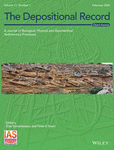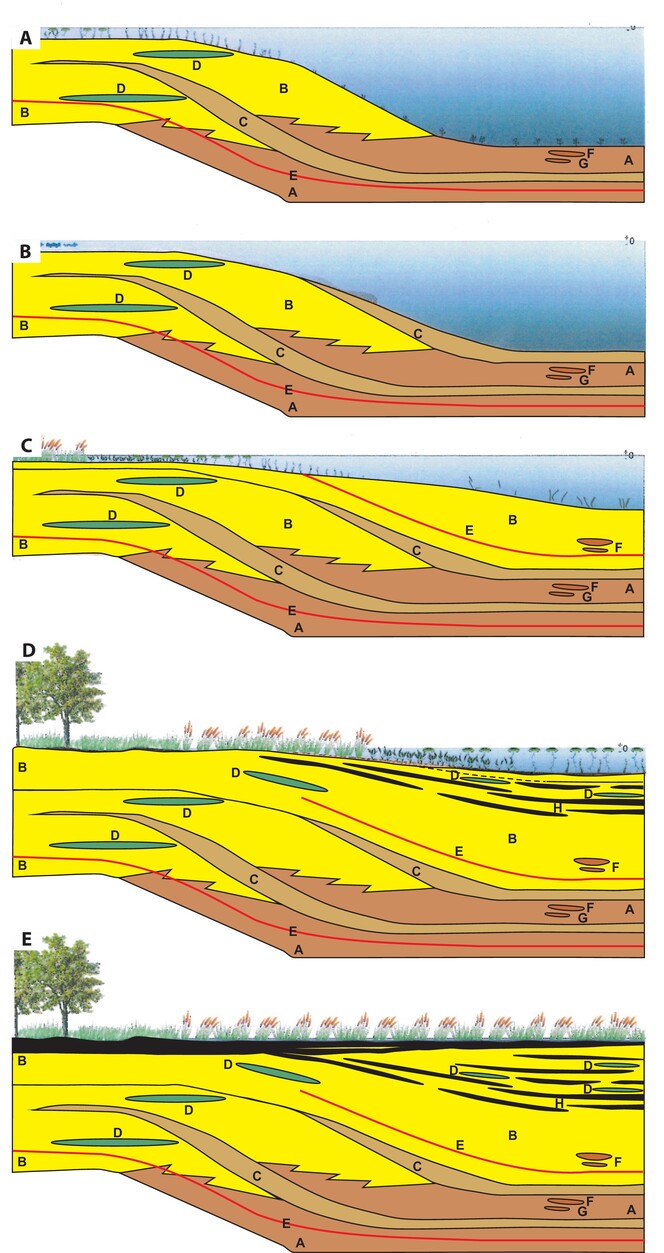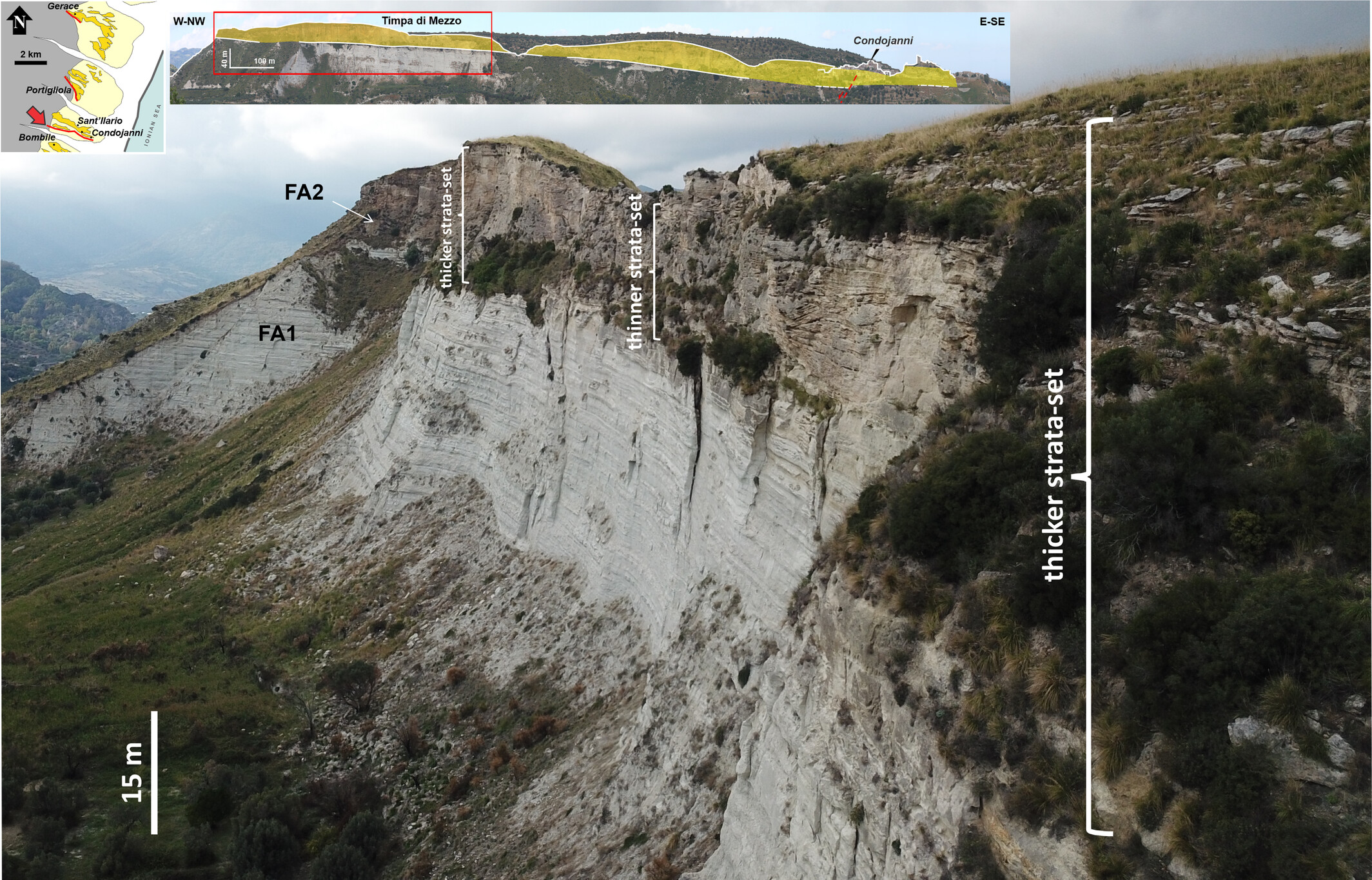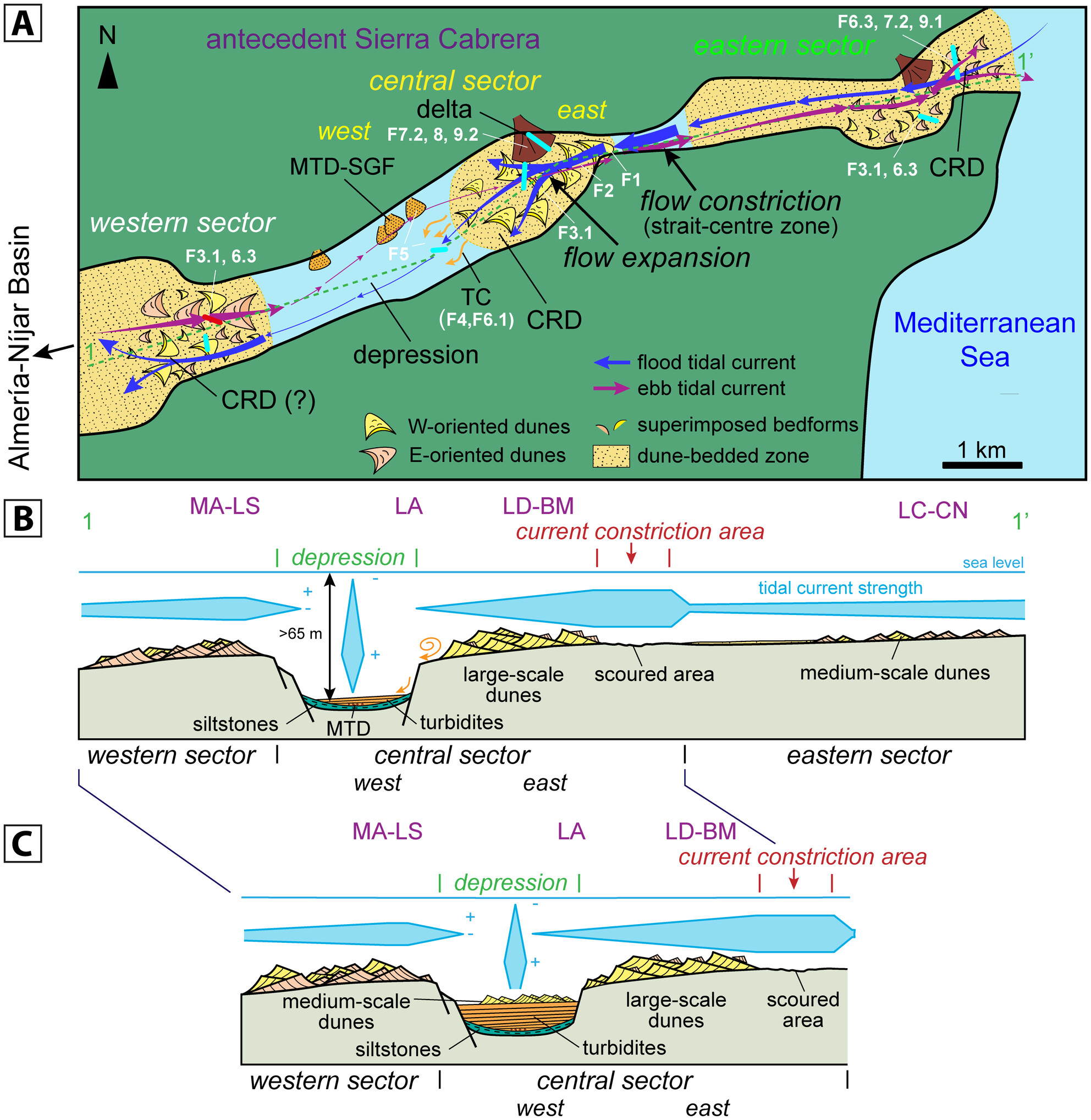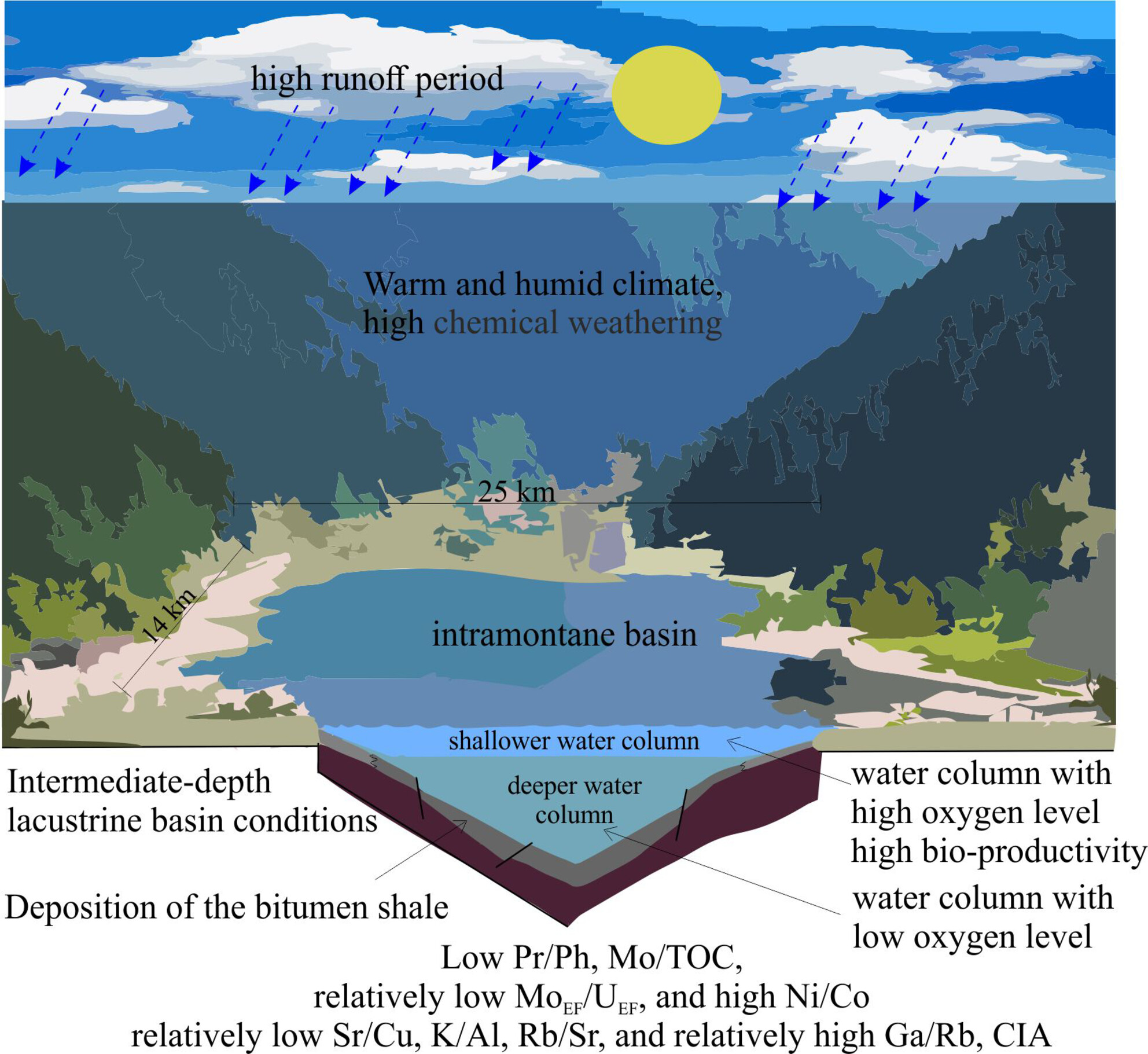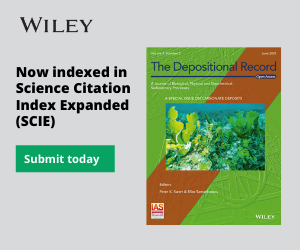Journal list menu
Export Citations
Download PDFs
ISSUE INFORMATION
ORIGINAL RESEARCH ARTICLE
Microfacies and geochemistry of Kimmeridgian limestone strata in the Eastern Pontides (North-East Turkey): Palaeoclimate and palaeoenvironmental influence on organic matter enrichment
- Pages: 4-21
- First Published: 06 June 2024
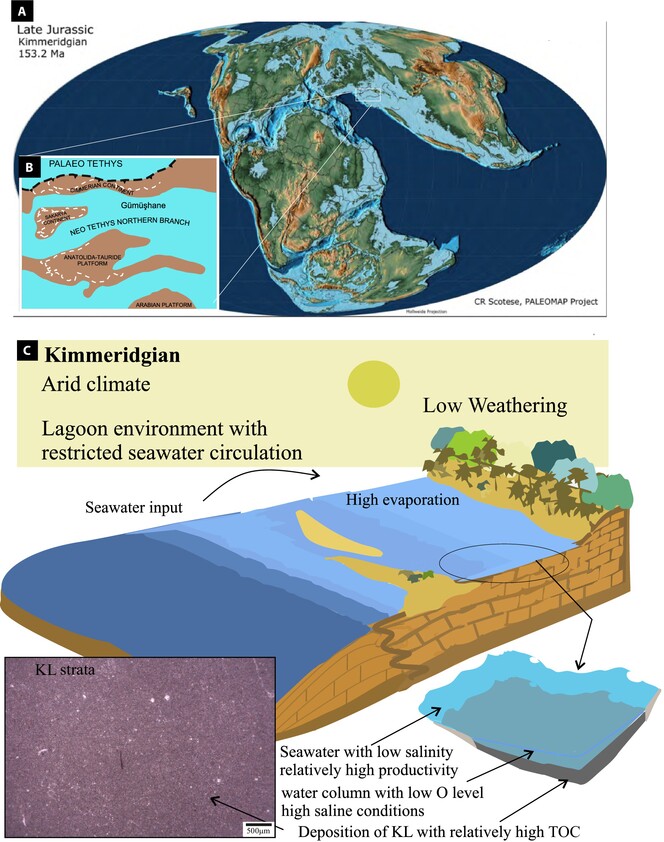
Kimmeridgian limestone (KL) strata are one best example of a peritidal carbonate that records palaeogeographic and palaeoclimate conditions in Eastern Pontide, Eastern Black Sea region. The KL strata are represented by well-preserved dark grey lime-mudstones that archive important geochemical proxy. New elements, including trace element, TOC (total organic carbon), stable isotope (δ18O, δ13C) data are represented to provide a better understanding of the palaeoclimate, weathering, salinity, redox conditions and productivity under which these strata were accumulated.
Lateral heterogeneity of basin-plain turbidites of the Cloridorme Formation, Quebec, Canada: Implications for horizontal well prediction
- Pages: 22-43
- First Published: 22 May 2024
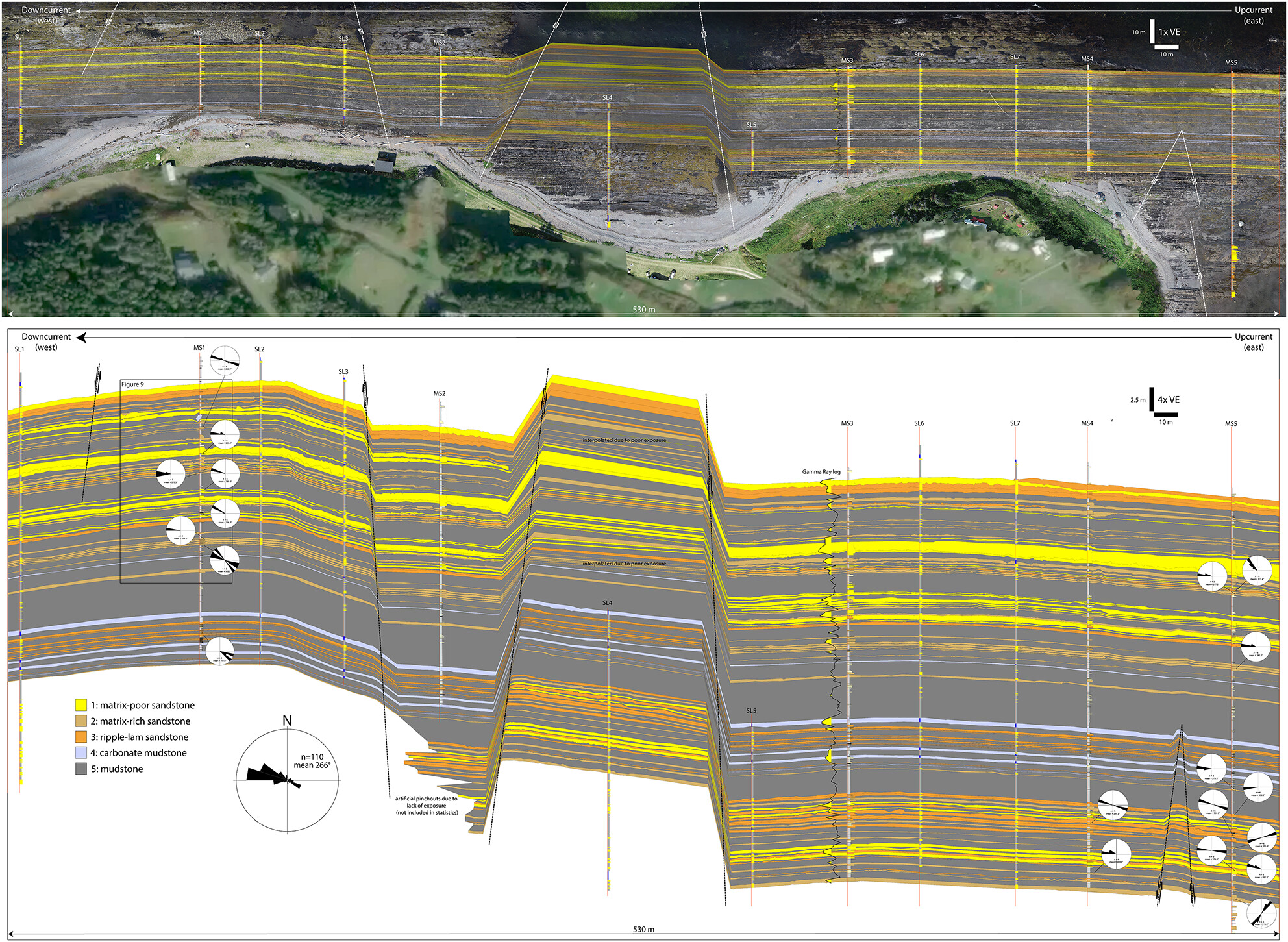
Exceptional outcrop exposures of the Cloridorme Formation, Quebec, Canada, offer a rare opportunity to quantify the lateral continuity of event beds and elements of a basin-plain depositional environment. Eighty-two per cent of the mapped event beds are present across a 530 m outcrop transect parallel to depositional dip. However, even in this overall ‘tabular’ deposit, there is significant bed-scale heterogeneity, with common pinch-and-swell geometries as well as downcurrent facies changes and occasional bed pinch outs. This fine-scale horizontal variability is particularly important to characterise for subsurface prediction, as reservoir models rely heavily on outcrop analogues. The Cloridorme Formation forms an excellent analogue for the Bone Spring and Wolfcamp formations in the Delaware Basin, and the outcrop data presented here can be used to inform horizontal well planning and geosteering operations, as well as reservoir model parameterisation.
Origin of ferruginous coated grains in the Lower Jurassic palustrine limestones of the Pranhita–Godavari Basin, India
- Pages: 44-69
- First Published: 20 May 2024
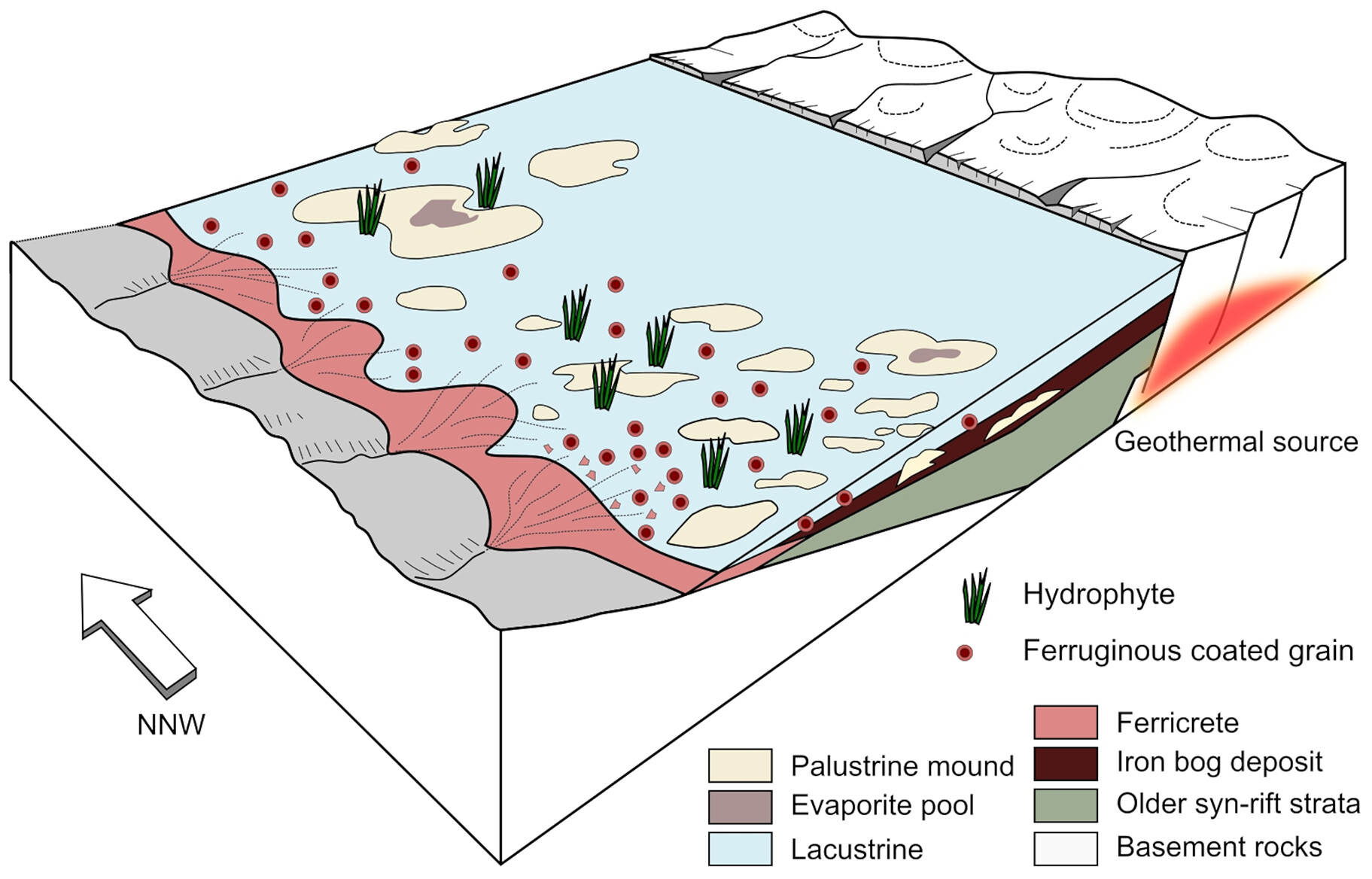
In this article, we have proposed a model for the origin of ferruginous coated grains in a continental rift setting. The association of these iron coated grains with limestones and sub-aerially weathered microbialites have made them suitable for a comparative assessment of various hypotheses of solute supply and precipitation, which can be relevant for other environments also. Based on field, microscopic and chemical characteristics, it is possible to conclude that microbially mediated precipitation in hydrothermal (hot spring)-influenced pools is the most probable origin for these ferruginous coated grains.
REVIEW
Early diagenetic evolution based on petrography and stable isotope analysis in the Barra Velha Formation of the Brazilian Pre-salt
- Pages: 70-94
- First Published: 17 June 2024
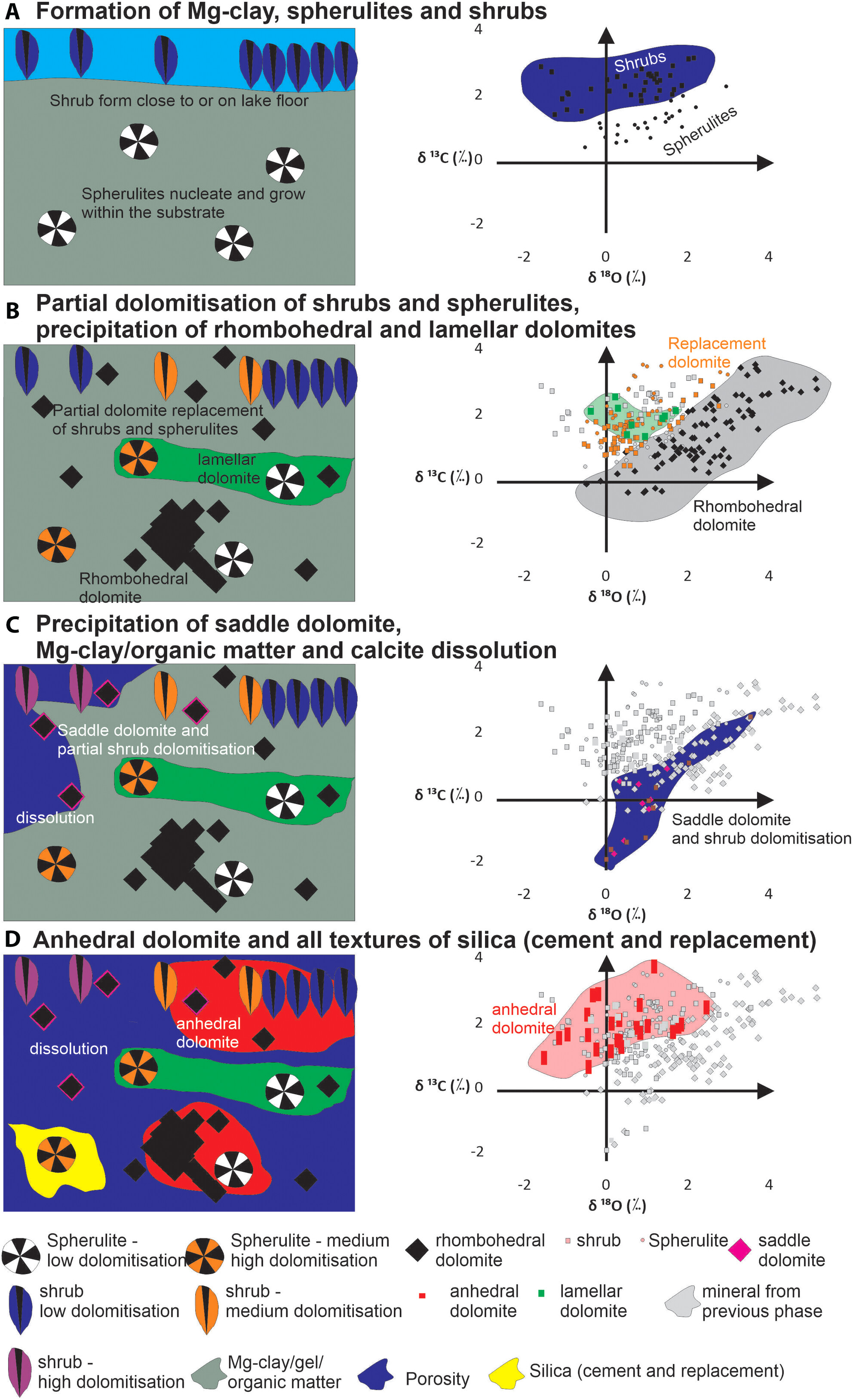
Mineralogy and texture of diagenetic phases in the Aptian Pre-Salt Barra Velha Formation are described, quantified and compared by facies and structural setting to understand their spatial and temporal distribution, and to develop predictive concepts for their genesis. This study focusses on the most important phases of the paragenetic sequence that took place pre-burial and are (1) formation of Mg-clay, calcite spherulites and shrubs, (2) partial dolomitisation of shrubs and spherulites and precipitation of rhombohedral and lamellar dolomites, (3) precipitation of saddle dolomite, matrix and carbonate dissolution and (4) anhedral dolomite and all textures of precipitated or substituted silica.
ORIGINAL RESEARCH ARTICLE
The Early–Middle Miocene climate as reflected by a mid-latitude lacustrine record in the Ebro Basin, north-east Iberia
- Pages: 95-120
- First Published: 20 June 2024
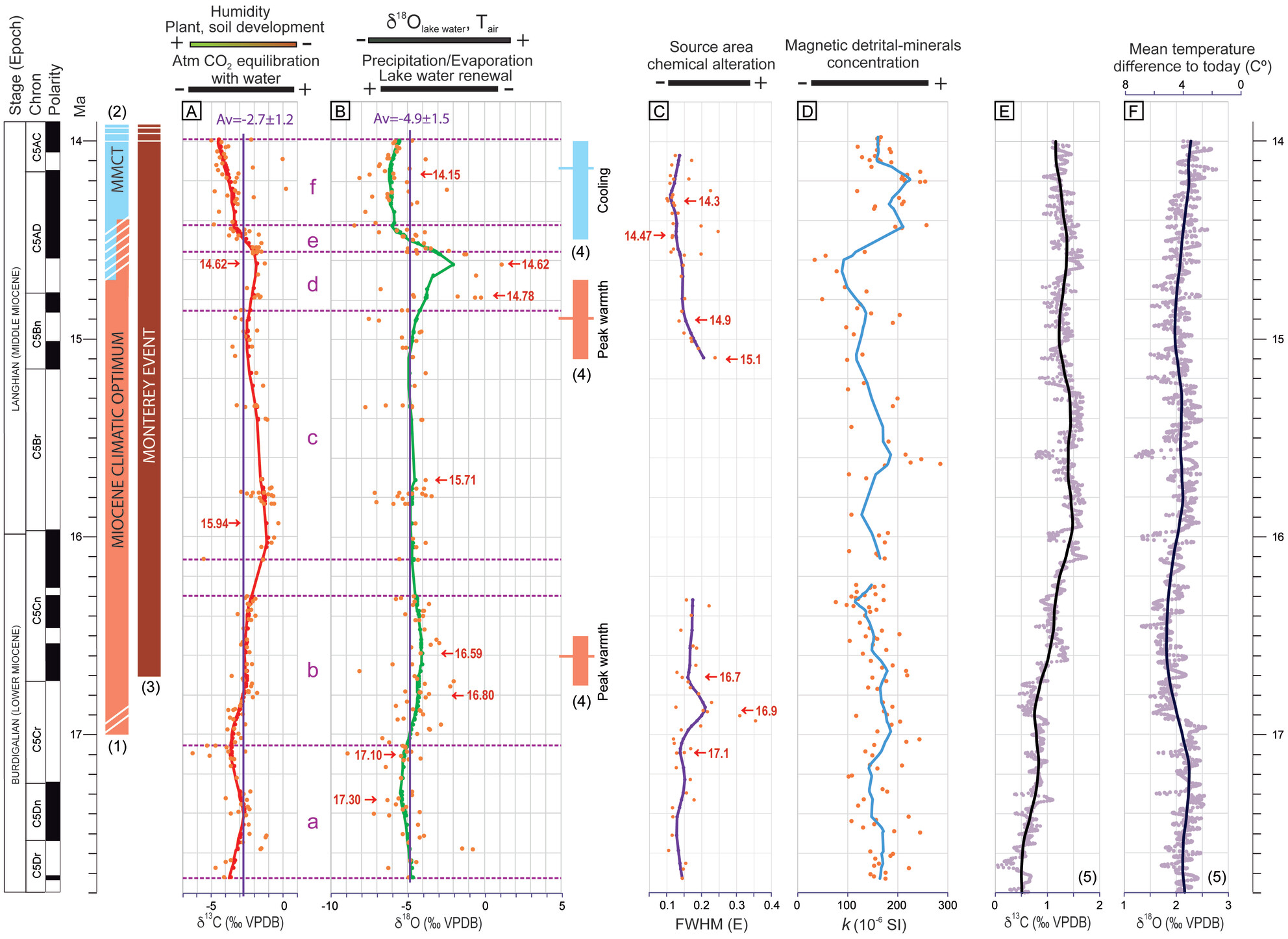
Climate variations are reflected in a mainly lacustrine succession spanning from 17.73 to 14.0 Ma in north-east Iberia, thus encompassing the Miocene Climatic Optimum. The δ18O and δ13C composition of an array of carbonate facies and marl samples, complemented with sedimentological analysis and the illite crystallinity index and magnetic susceptibility data, evidenced changes in humidity and air temperature. Results shed light upon the tightly coincidental features between terrestrial and marine records over these time intervals.
Sedimentology and palaeoenvironmental analysis of a karstic shallow carbonate lake (Early-Middle Miocene, Sinj Basin, Croatia)
- Pages: 121-146
- First Published: 15 June 2024
The Miocene lacustrine carbonate factory of the Ñirihuau Formation, Ñirihuau Basin, North Patagonian Andes, Argentina
- Pages: 147-181
- First Published: 17 June 2024
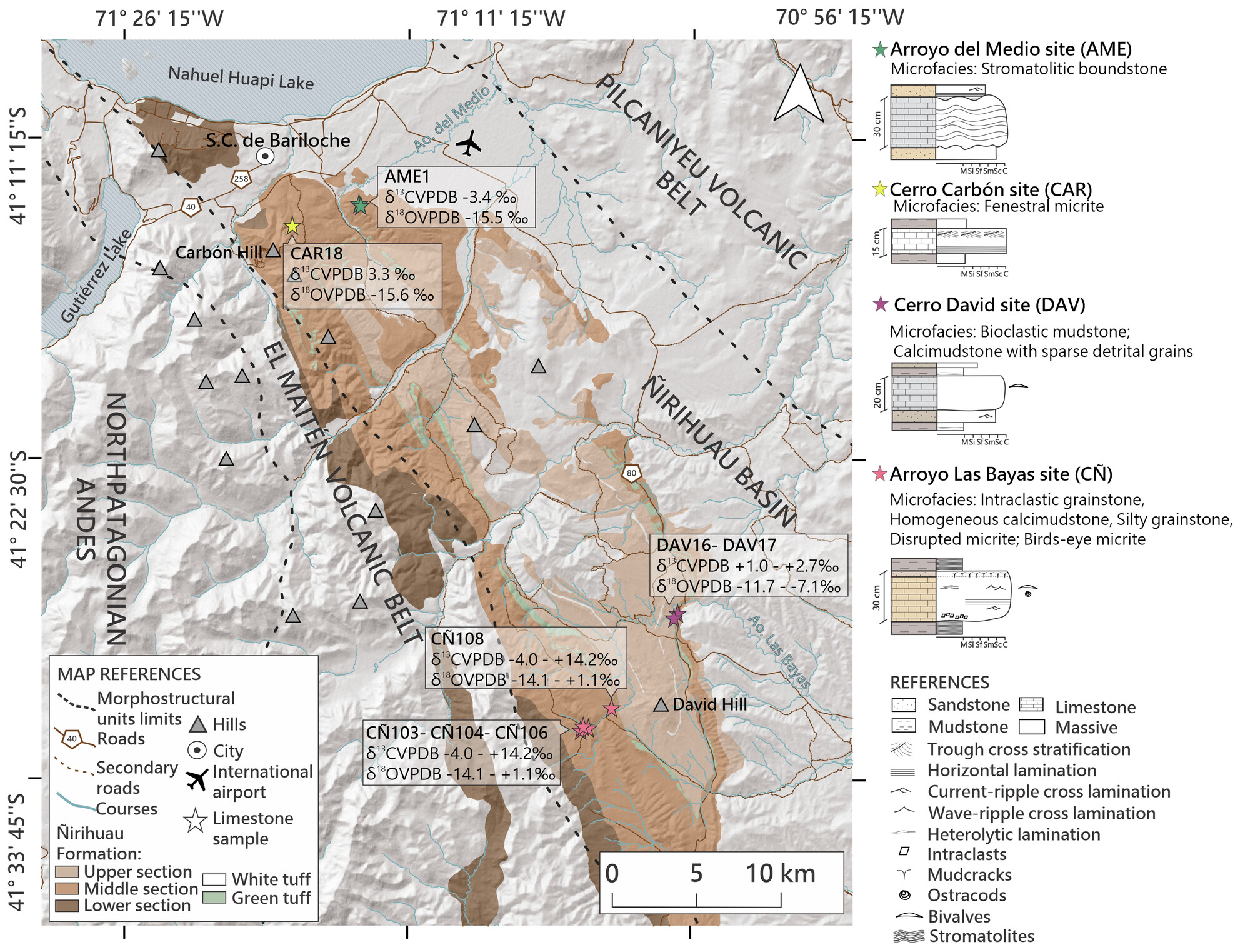
Detailed sedimentologic, petrographic and geochemical analyses of the lacustrine deposits registered on the Ñirihuau Formation middle section in the northern sector of the Ñirihuau Basin are presented. The lacustrine carbonates found within these deposits were analysed to characterise the palaeolake system as well as the carbonate factory of the basin, which would enable a better understanding of the hydrologic, sedimentologic and paleoclimatic conditions that would have taken place during their deposition. Furthermore, their possible link to the Middle Miocene Climatic Optimum can be evaluated in light of the new data. Therefore, the results herein presented provide a unique perspective on the conditions that prevailed during the deposition of the lacustrine system that was established between ca 15 and 13 Ma (Langhian–Serravallian) and constitute a valuable contribution to the current knowledge of the Ñirihuau Basin filling and its evolution.
The middle-upper Eocene Loza-Portilla Formation (Western Pyrenees, North Spain): Palustrine-lacustrine carbonate-dominated sequences in a piggy-back basin under compressional tectonic stress
- Pages: 182-209
- First Published: 15 June 2024
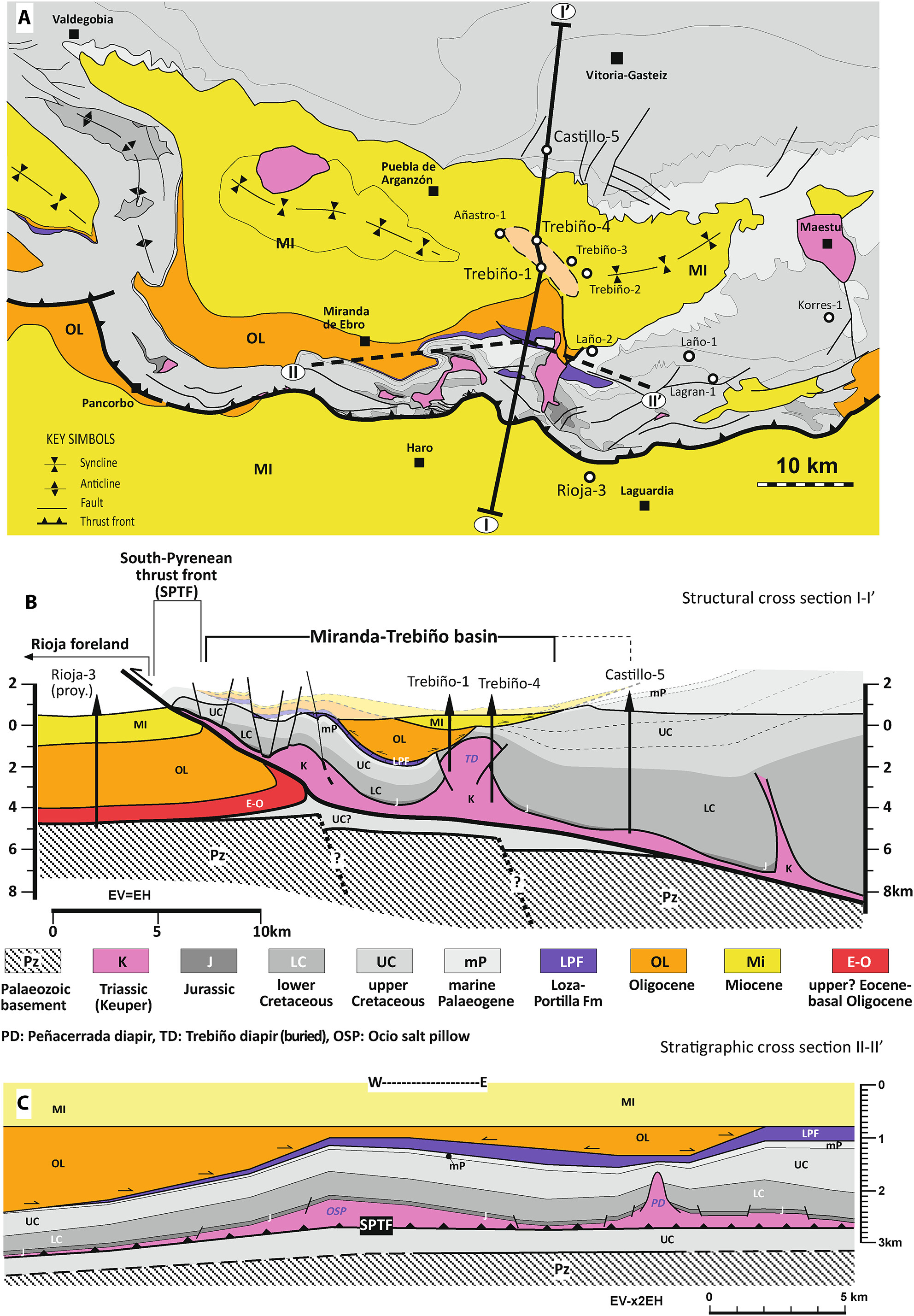
The Loza-Portilla Formation (middle-upper Eocene) from the Miranda-Trebiño Basin (Western Pyrenees, N Spain) consisits of alluvial to palustrine-lacustrine facies associations arranged in three depositional sequences. The lacustrine deposition was controlled by a semiarid climate, compressional tectonism and diapiric influences.
The regressive surface of marine erosion generated by tides: A case study from a Pleistocene tidal sand ridge sequence, Calabria, Southern Italy
- Pages: 210-231
- First Published: 07 July 2024
Carbonate-rich megabeds within a Triassic siliciclastic deep-water system, West Qinling orogenic belt, Central China: Character, processes and implications
- Pages: 232-259
- First Published: 08 July 2024
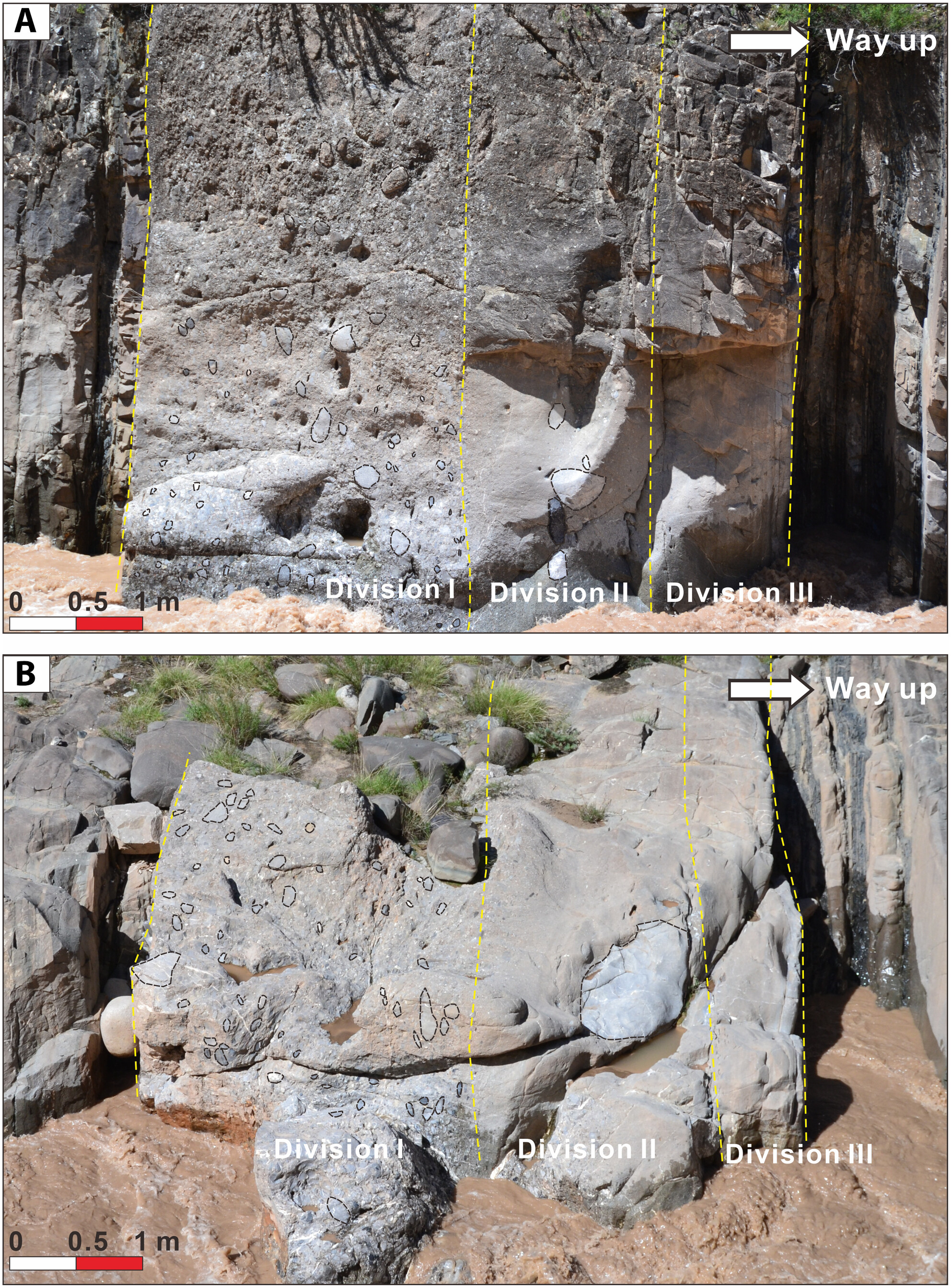
This article reports an important but rarely documented deep-water sediment gravity flow deposit—the carbonate-rich megabed, from outcrops of the Lower Triassic in the West Qinling orogenic belt, central China. It focusses on the character and processes of these megabeds, explores their implications, and provides a new depositional model for the mixed deep-water system.
Sedimentary facies assemblages of the Selendi Supradetachment Basin (Western Turkey): Implications for balancing subsidence and sedimentation in a Neogene lacustrine basin
- Pages: 260-280
- First Published: 12 July 2024
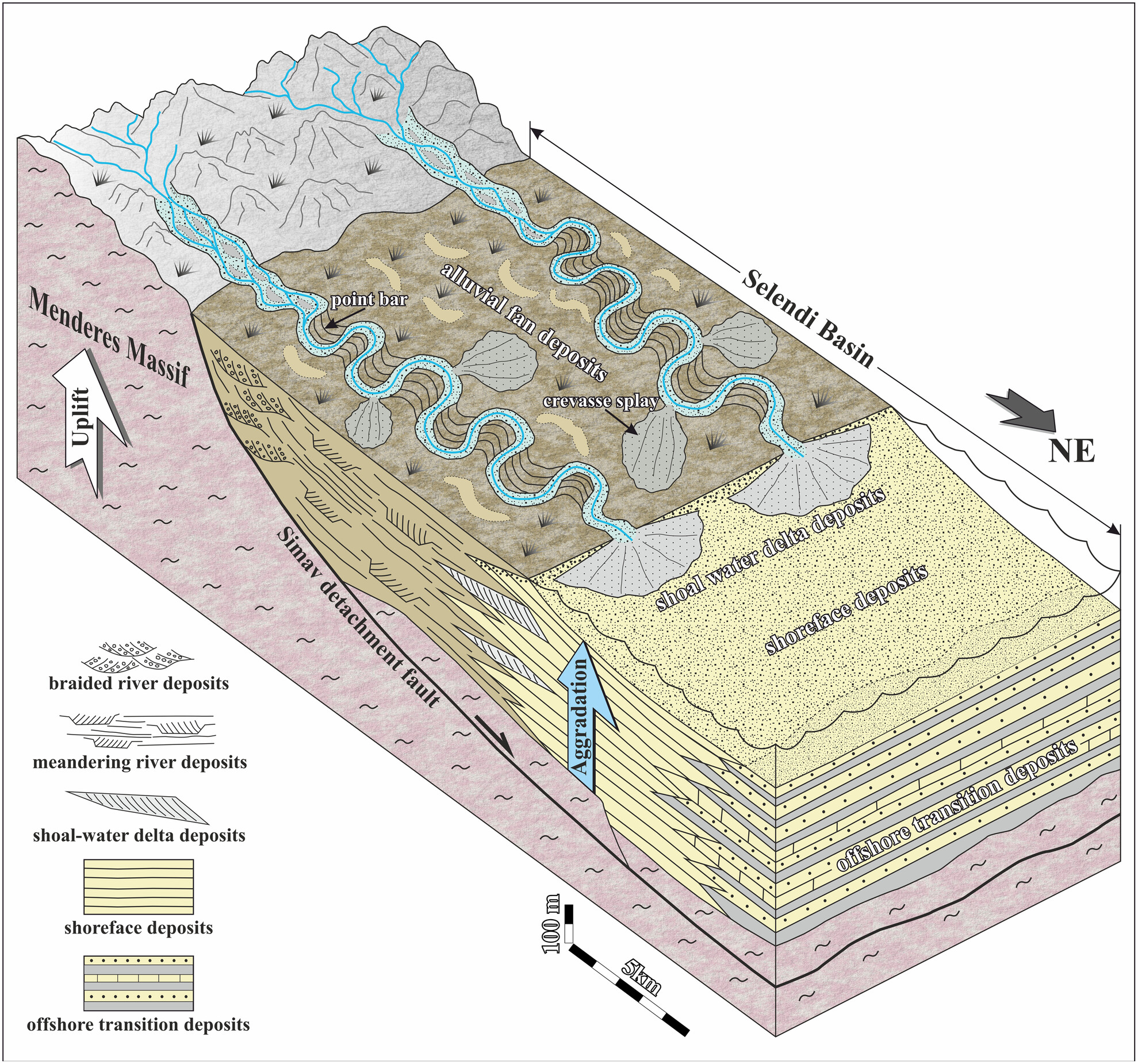
The Selendi lacustrine basin developed as a supra-detachment basin on the Simav detachment fault in response to the continental extension in western Türkiye and the associated uplift of the Menderes Massif. The facies assemblages show an aggradational stacking pattern developed throughout deposition of the basin. This stacking pattern records a balance between the sediment supply and a steadily growing basin accommodation. It is interpreted that the synsedimentary activity of the Simav detachment fault and the uplift of the Menderes Massif played a key role in controlling the sedimentary facies and depositional architecture of the Selendi Basin, which are quite regular rather than abrupt. This study shows that the intensity of a synsedimentary fault system, especially one leading to basin opening, plays a crucial role in controlling the architecture and sedimentary facies of the basin succession, both by creating accommodation and by filling it.
Tidally influenced deposits in the Río Alías Strait connecting a marginal basin with the Mediterranean Sea (Pliocene, South-East Spain)
- Pages: 281-310
- First Published: 24 July 2024
Role of tidal range and coastline morphology on the evolution of two macrotidal sand spits
- Pages: 311-327
- First Published: 30 July 2024
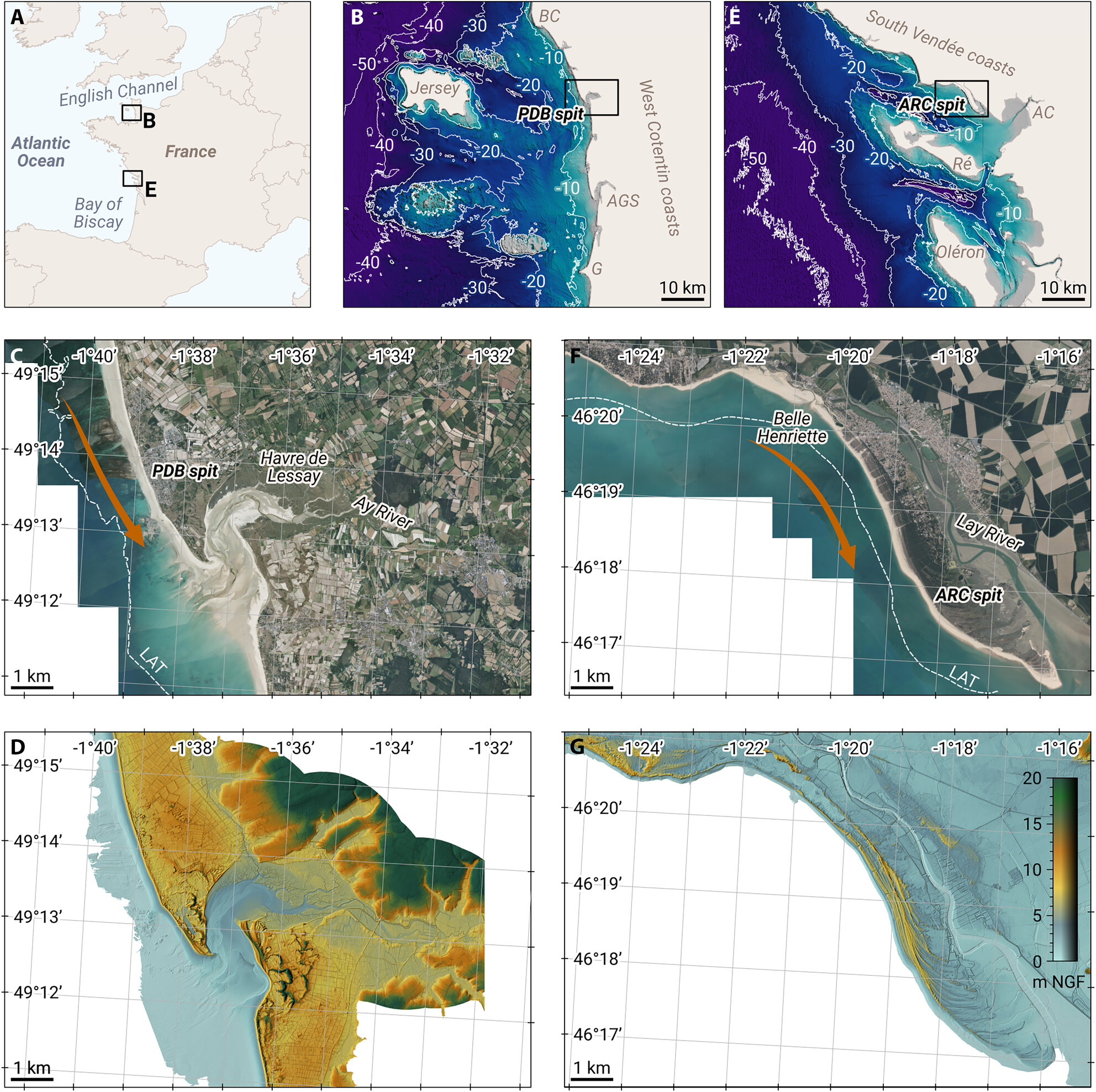
Based on historical map and stratigraphic data, the construction dynamics of two sandspits, respectively, subject to macrotidal and hypertidal range (6.5 m vs. 14 m), and that both appeared at the end of the 17th century, are compared. The hypertidal spit developed fast, between 1650 and 1750 CE, with a dominant seaward direction while the macrotidal spit is still elongating. We hypothesise that the hypertidal range, due to wide tidal flats and thus long aeolian fetch, favours sustained wind-induced sediment supply causing fast progradation, while along the macrotidal coast, due to high wave obliquity, longshore transport is dominant and induces a continuous elongation of the spit.
ORIGINAL ARTICLE
Cretaceous cyclic peritidal carbonates of the Apulia Carbonate Platform (Apulia, southern Italy) in a hierarchical sequence-stratigraphic perspective: A case study from the Murge area (the Giovinazzo sea-cliff section)
- Pages: 328-353
- First Published: 06 August 2024
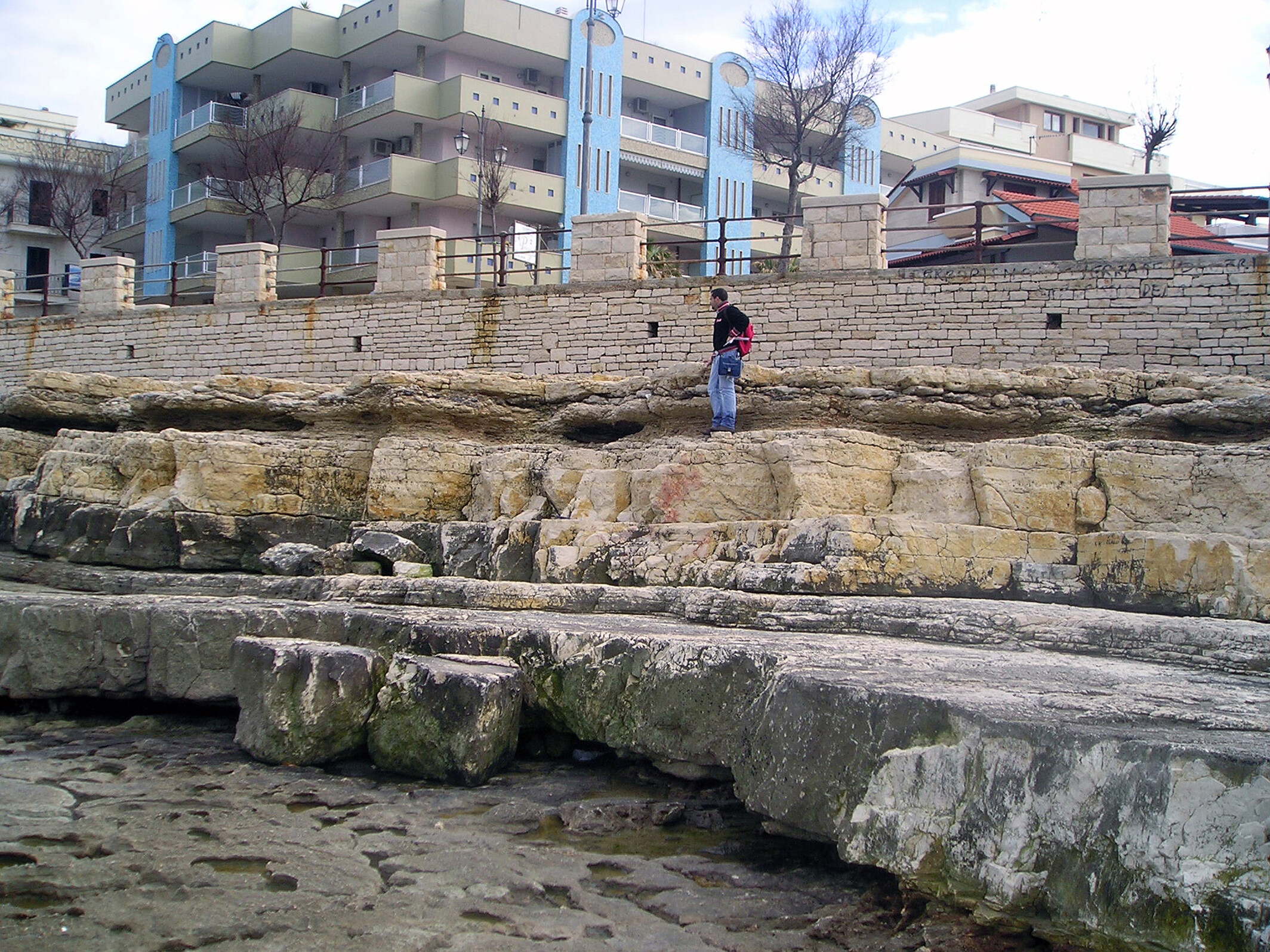
Four different types of elementary sequences (condensed, catch-down, catch-up and give-up) were recognised and interpreted in terms of relative sea-level changes to reconstruct the relative sea-level curve of the entire succession. The envelope of the reconstructed relative sea-level curve was used to represent the long-term accommodation change on the platform, that covers a time span of approximately 1.8 Myr. Most of this time was spent in subaerial exposure, as approximately 1.2 Myr was predicted to be condensed in a stratigraphic interval encompassing both the sequence boundary zone/falling stage deposits and the lowstand deposits. Moreover, it was interpreted that about two-third of the total thickness of the studied succession was formed in only 280 kyr and consisted of both transgressive and maximum flooding deposits.
Punctuated aggradation and flow criticality in deep water channel systems
- Pages: 354-372
- First Published: 14 August 2024
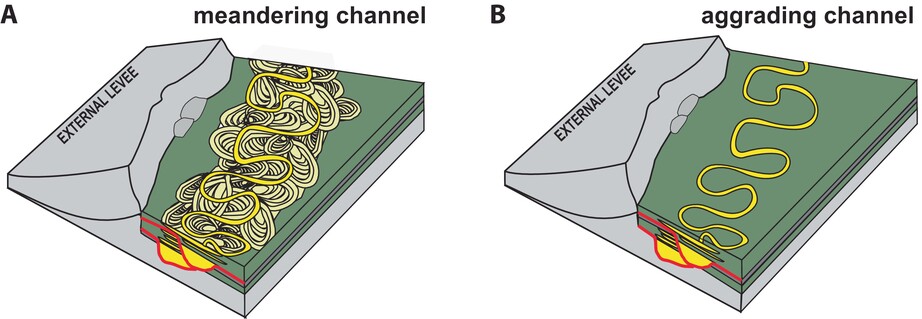
Sinuous deepwater channels may form meander belts or aggrading systems, and may alternate between the two states repeatedly. We invoke two-layer subcritical flow to explain their river-like behaviour, and suggest that a switch from subcritical to supercritical flow may be responsible for the change in behaviour from meandering to aggrading.
Hierarchies of stratigraphic discontinuity surfaces in siliciclastic, carbonate and mixed siliciclastic-bioclastic tidalites: Implications for fluid migration in reservoir quality assessment
- Pages: 373-402
- First Published: 14 August 2024

The hierarchies of the stratigraphic discontinuity surfaces observed in ancient tidalites are qualitatively assessed, aiming to evaluate their role as possible preferential conduits for fluid migration. Three outcrop examples are presented from microtidal settings of southern Italy: (i) siliciclastic tidalites accumulated in a strait; (ii) carbonate tidalites, accumulated in a lagoon and tidal flat; and (iii) mixed siliciclastic-bioclastic tidalites deposited in a bay.
The role of organic matter in Brazilian Pre-Salt carbonates
- Pages: 403-417
- First Published: 16 September 2024
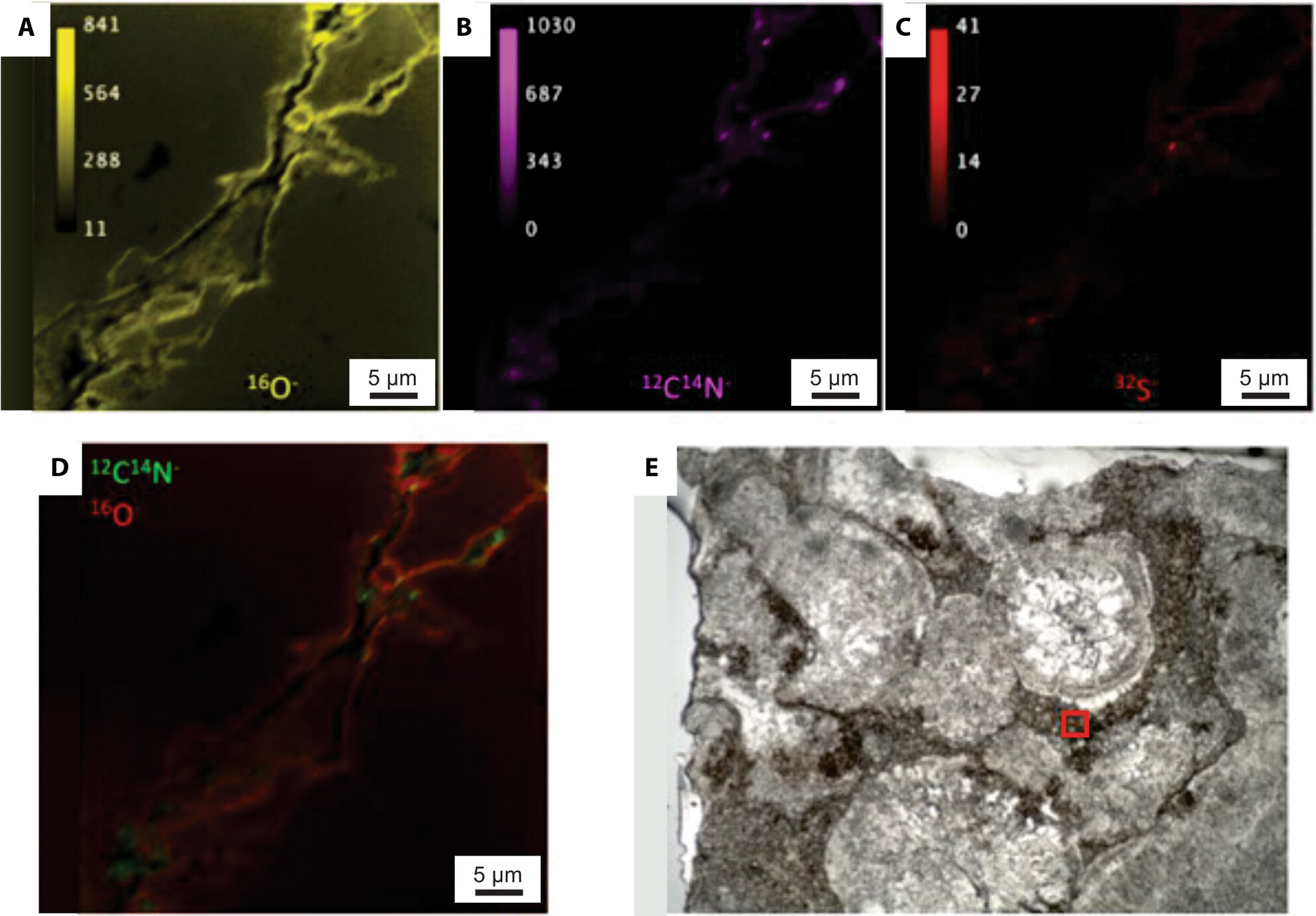
Diverse types of organic matter (OM) were identified in Brazilian Pre-Salt carbonates. The presence of OM along and inside calcite structures indicates a strong microbial influence in Brazilian Pre-Salt carbonate precipitation. The occurrence of these organic compounds in distinguishing facies raises the discussion of biotic versus abiotic genesis of the Pre-salt lacustrine reservoirs.
Comparative clumped isotope temperature relationships in freshwater carbonates
- Pages: 418-443
- First Published: 06 October 2024
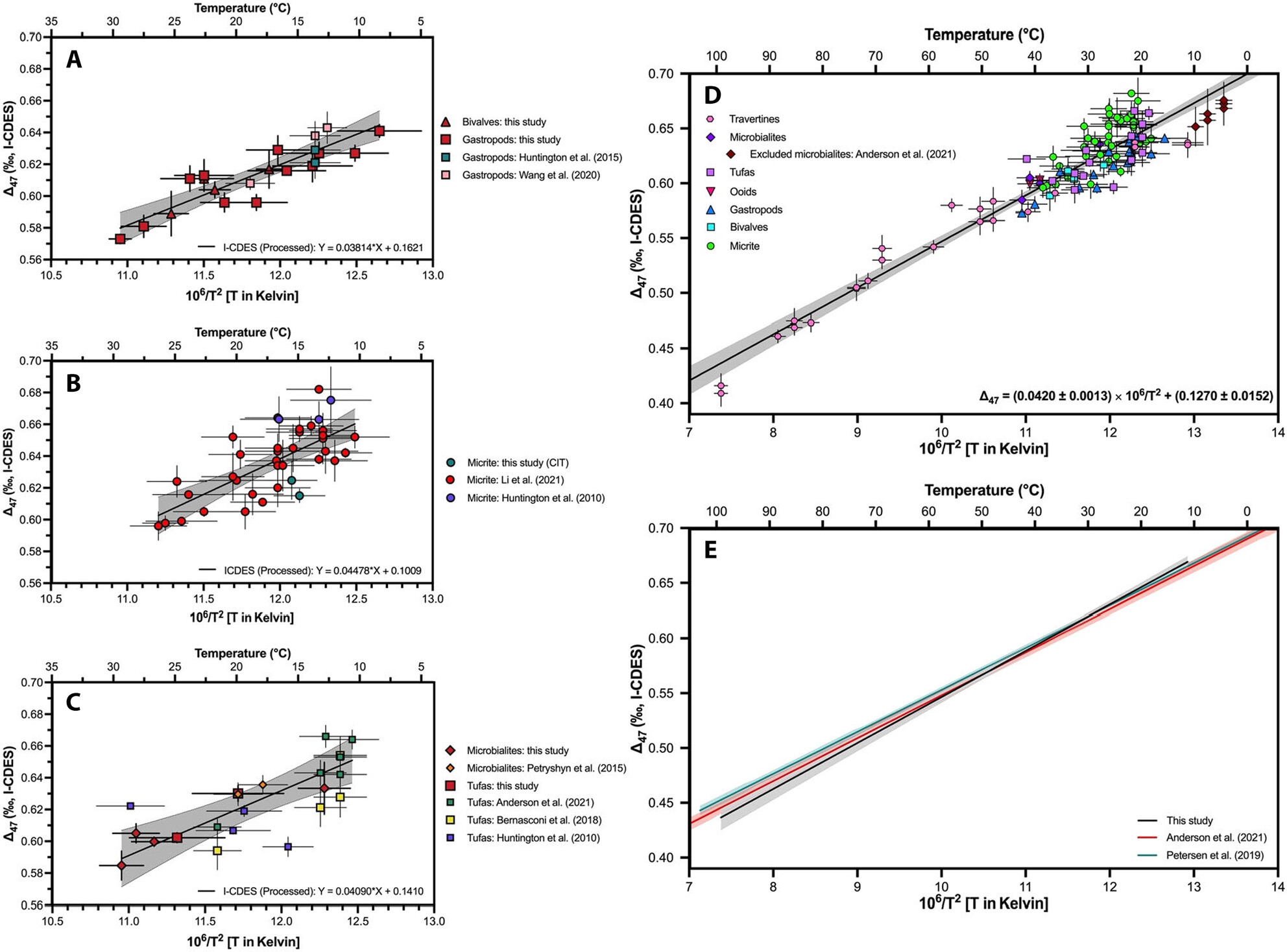
Terrestrial freshwater carbonates are sensitive to changes in their environment and their composition can provide an opportunity to constrain past climates. This study creates a calibration constraining the relationship between the temperatures of different types of modern freshwater carbonates formed and their chemistry. This study also assesses the impact of utilising these calibrations on new and published palaeohydrological and palaeoelevation data sets.
Sedimentary factors controlling the organic matter enrichment in oil shale, Seyitömer Lacustrine Basin, Western Anatolia: New implications from organic and inorganic geochemistry
- Pages: 444-466
- First Published: 06 October 2024
Description of the Late Holocene South-east Saline Everglades, Florida palustrine depositional environment with comparisons to other Holocene environments
- Pages: 467-485
- First Published: 09 October 2024

The South-east Saline Everglades marl deposition began ca 3200 year BP and the increasing rate of sea-level rise since 1900 is driving saltwater encroachment at rates that will eliminate freshwater wetlands prior to 2100. The transgressive marl unit is contrasted to other South Florida and global Holocene palustrine depositional environments, providing an additional model for utilisation in interpretation of the rock record.




